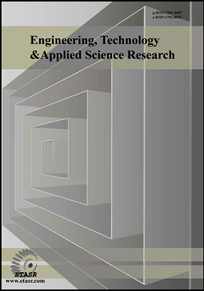Harnessing Explainable Artificial Intelligence (XAI) based SHAPLEY Values and Ensemble Techniques for Accurate Alzheimer's Disease Diagnosis
Received: 15 November 2024 | Revised: 27 December 2024 and 8 January 2025 | Accepted: 11 January 2025 | Online: 26 January 2025
Corresponding author: Manikandan Ganesan
Abstract
Machine Learning (ML) is a dynamic method for managing extensive datasets to uncover significant patterns and hidden insights. ML has revolutionized numerous industries, from healthcare to finance, and from entertainment to transportation. Ensemble classifiers combined with Explainable AI (XAI) have surfaced as a significant asset in the field of Alzheimer's Disease (AD) diagnosis. Boosting EC techniques coupled with Shapley Additive Explanations (SHAP) offers a powerful approach to AD diagnosis. This paper investigates boosting ensemble ML schemes, such as XGBoost, LightGBM, and Gradient Boosting (GB), for AD diagnosis and SHAP for feature selection. The proposed scheme achieved efficient results, with an accuracy of more than 94% with minimum features for the detection process.
Keywords:
machine learning, SHAP, ensemble classifiers, explainable AI, Alzheimer's diseaseDownloads
References
R. Li, "Data Mining and Machine Learning Methods for Dementia Research," in Biomarkers for Alzheimer’s Disease Drug Development, R. Perneczky, Ed. Springer, 2018, pp. 363–370.
Z. Fan, F. Xu, X. Qi, C. Li, and L. Yao, "Classification of Alzheimer’s disease based on brain MRI and machine learning," Neural Computing and Applications, vol. 32, no. 7, pp. 1927–1936, Apr. 2020.
C. H. Chang, C. H. Lin, and H. Y. Lane, "Machine Learning and Novel Biomarkers for the Diagnosis of Alzheimer’s Disease," International Journal of Molecular Sciences, vol. 22, no. 5, Jan. 2021, Art. no. 2761.
S. T. Ahmed and S. M. Kadhem, "Alzheimer's disease prediction using three machine learning methods," Indonesian Journal of Electrical Engineering and Computer Science, vol. 27, no. 3, pp. 1689-1697, Sep. 2022.
A. K. Dubey, A. K. Sinhal, and R. Sharma, "An Improved Auto Categorical PSO with ML for Heart Disease Prediction," Engineering, Technology & Applied Science Research, vol. 12, no. 3, pp. 8567–8573, Jun. 2022.
K. M. M. Uddin, M. J. Alam, Jannat-E-Anawar, M. A. Uddin, and S. Aryal, "A Novel Approach Utilizing Machine Learning for the Early Diagnosis of Alzheimer’s Disease," Biomedical Materials & Devices, vol. 1, no. 2, pp. 882–898, Sep. 2023.
S. M. Alanazi and G. S. M. Khamis, "Optimizing Machine Learning Classifiers for Enhanced Cardiovascular Disease Prediction," Engineering, Technology & Applied Science Research, vol. 14, no. 1, pp. 12911–12917, Feb. 2024.
M. J. Ghrabat et al., "Utilizing Machine Learning for the Early Detection of Coronary Heart Disease," Engineering, Technology & Applied Science Research, vol. 14, no. 5, pp. 17363–17375, Oct. 2024.
H. K. Ravikiran, R. Deepak, H. A. Deepak, M. S. Prapulla Kumar, S. Sharath, and G. H. Yogeesh, "A robust framework for Alzheimer’s disease detection and staging: incorporating multi-feature integration, MRMR feature selection, and Random Forest classification," Multimedia Tools and Applications, Aug. 2024.
M. H. M. Khan, P. Reesaul, M. M. Auzine, and A. Taylor, "Detection of Alzheimer’s disease using pre-trained deep learning models through transfer learning: a review," Artificial Intelligence Review, vol. 57, no. 10, Sep. 2024, Art. no. 275.
R. El Kharoua, "Alzheimer’s Disease Dataset." Kaggle, https://doi.org/10.34740/kaggle/dsv/8668279.
Downloads
How to Cite
License
Copyright (c) 2025 Bala Krishnan Raghupathy, Manyam Rajasekhar Reddy, Prasad Theeda, Elangovan Balasubramanian, Rajesh Kumar Namachivayam, Manikandan Ganesan

This work is licensed under a Creative Commons Attribution 4.0 International License.
Authors who publish with this journal agree to the following terms:
- Authors retain the copyright and grant the journal the right of first publication with the work simultaneously licensed under a Creative Commons Attribution License that allows others to share the work with an acknowledgement of the work's authorship and initial publication in this journal.
- Authors are able to enter into separate, additional contractual arrangements for the non-exclusive distribution of the journal's published version of the work (e.g., post it to an institutional repository or publish it in a book), with an acknowledgement of its initial publication in this journal.
- Authors are permitted and encouraged to post their work online (e.g., in institutional repositories or on their website) after its publication in ETASR with an acknowledgement of its initial publication in this journal.





